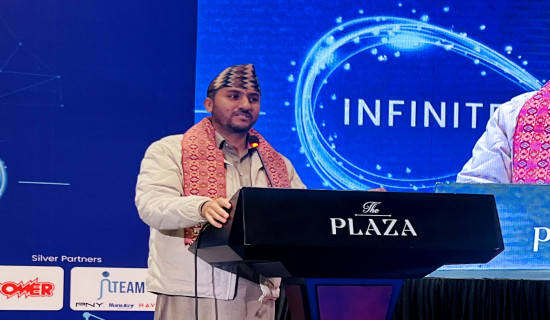- Sunday, 21 December 2025
Information On Heritage
The British historian Perceval Landon came to Kathmandu in the 1920s and was so taken by its charm that he wrote for the world: “The city has more temples than houses and more idols than people.” The scribe would like to co-opt this famous phrase and write, Kathmandu is a valley of heritage that has monuments around every corner and on every street.
But if you were a visiting tourist, you would not get to know this by reading the brochures and pamphlets the authorities gave you at the Hanumandhoka, Patan or Bhaktapur Durbar Square. It is indeed baffling why we display such an unwillingness to share information despite having such rich culture and history.
Let us take a look at the Patan Museum as an example. Hundreds visit this facility every day and get to learn about the artefacts stored here from their information cards and the museum staff. However, they do not get to know that the Keshav Narayan Temple behind Patan’s iconic golden door is one of the eight ‘Manis’ (pearls) of the Durbar Square that give it its name Manigal (Mangal/Mangalbazaar)
There are no cards describing the story of the magical queen who could walk on water at the Bhandarkhal Pond and people do not get to know that the Sundari Chowk courtyard was once the site of a Buddhist monastery that is today at Haka Bahal, Lalitpur.
Visitors are also deprived of Dr. Gudrun Buhnemann of the University of Wisconsin-Madison’s postulation that the museum’s emblematic golden window could actually be an addition made during the Shah period rather than something installed during the construction of the palace in the Malla era.
It is the same condition at the Hanumandhoka Durbar Museum whose brochure, while presenting photos of areas inaccessible to the ticket-buyers, does not even list the names of all its 12 courtyards, let alone their related monuments. The around 1,000 people who visit this museum, based in the old palace used by the Malla and Shah kings from arguably the two most consequential dynasties in Nepali history, get to enter the Nasal Chowk, Lohan Chowk, Putali Garden and the ornaments gallery but often overlook the raised platform used by the Shah kings for their coronation in the first yard, step over the stone that gives the second yard its name, do not realise that the snakehead in the pond in the third garden is stolen from Bhaktapur and that the fourth gallery was once used as a storehouse.
Often, the structures of and around the museums and the Durbar Squares are more interesting than the objects housed in them. Unfortunately, they go completely overlooked because we do not promote them adequately to national and international tourists.
It must be noted here that, to mitigate this, the Patan Museum offers free guided tours to those who request them. Additionally, its brochure serves to introduce those who read it to some key historic sites around Lalitpur; namely, Kumbeshwor, Golden Temple, Kumari House, Mahabuddha and Okubahal. But this may not be enough to cover the vast scope of the ancient town.
Similarly, Hanumandhoka has also planned two guided tours a week. It used to offer such tours before the COVID-19 pandemic and now seeks to resume them.
But again, how many would actually take them? And shouldn’t those who travel alone also get to know our cities’ history, culture, civilisation and significance? Guided tours are a good step but the problem is that they cannot cover all.
Posters and signboards in front of the temples and buildings could be a way to inform people of their history but they risk desecrating them. So, maybe a good way to impart information to tourists would be self-guided interactive maps. These maps steer individuals around historic sites and give them important facts about the things they encounter along the way. They can also be dramatised with characters to make them interesting. QR codes may also be a viable option at places with internet access. The Mayadevi Temple around Lumbini has already put up QR codes at strategic locations around the birthplace of Gautam Buddha and they seem to be doing a good job informing people about the importance of the site.
There are several measures that the authorities can adopt, through consultation and collaboration with experts and local communities. But something must be done soon because the lack of readily available information is preventing both visitors and locals from grasping the whole scope and context of our cultural heritage.














